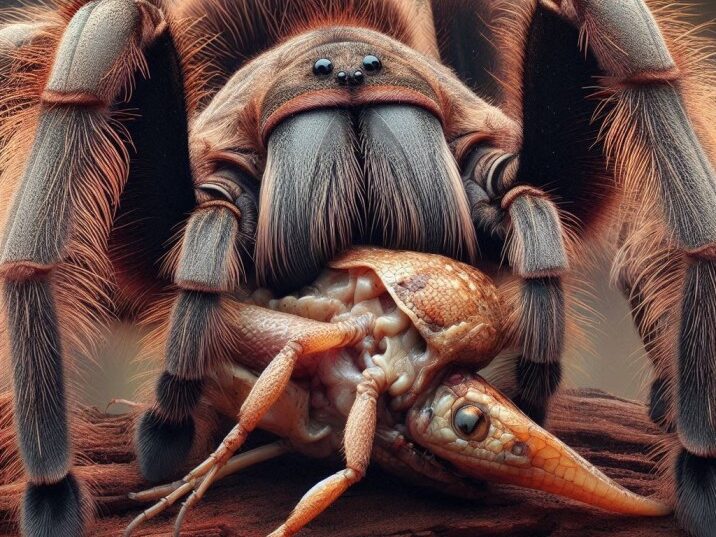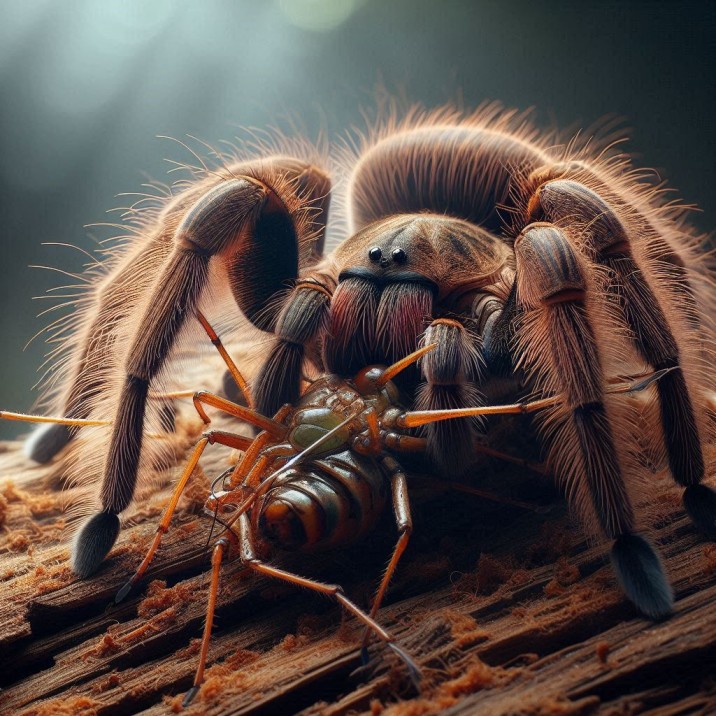Tarantulas are fascinating creatures known for their large size, hairy bodies, and sometimes intimidating appearance. But what do these eight-legged arachnids enjoy eating the most? If you’re curious about what is a tarantulas favorite food, you’re in the right place! In this article, we will explore What Is a Tarantulas Favorite Food? what they prefer to eat, and some fun facts about their eating habits. Whether you’re a budding arachnologist or just someone curious about these incredible spiders, this guide will give you all the information you need.
Introduction
Table of Contents
Tarantulas, often feared for their large, hairy appearance, are actually quite intriguing creatures, especially when it comes to their diet. What is a tarantulas favorite food? Tarantulas are carnivorous predators, meaning they eat other animals. Unlike many other spiders that rely on webs to catch prey, tarantulas are hunters, actively seeking out their meals. They have a varied diet that mainly consists of insects, but they are known to eat larger prey as well. Understanding what tarantulas like to eat is not only fascinating but also essential for anyone considering keeping one as a pet.
In this article, we’ll delve into the dietary preferences of tarantulas, from their favorite insects to how they manage to eat prey much larger than themselves. We’ll also provide a detailed look at the types of food that are essential for their survival in the wild and in captivity. By the end of this article, you’ll have a complete understanding of what makes a perfect meal for a tarantula!

What is a Tarantulas Favorite Food?
To answer this question What is a Tarantulas Favorite Food we need to understand what they eat.
Insects: A Tarantula’s Main Diet
Tarantulas are primarily insectivores, meaning that insects make up the bulk of their diet. Crickets and roaches are among their favorite prey. These insects are abundant in the wild and are easy to catch for a tarantula. In captivity, these are the most commonly offered foods to pet tarantulas because they are nutritious and readily available. Mealworms and superworms are also popular choices, providing a good source of protein for these spiders.
Small Vertebrates: A Special Treat
While insects are the primary food source for most tarantulas, some larger species have been known to eat small vertebrates. This includes creatures like lizards, frogs, and even small mice. However, this is not a common occurrence and usually happens with larger tarantulas that can handle such prey. For example, the Goliath birdeater tarantula, one of the largest tarantula species, has been known to eat small birds, though this is rare. These vertebrates provide a protein-rich meal, making them a special treat for tarantulas.
Spiders: Cannibalistic Tendencies
Interestingly, some tarantulas are known to be cannibalistic, meaning they will eat other spiders, including other tarantulas. This usually occurs in the wild when food is scarce, or during mating when the female might eat the male. This behavior highlights the opportunistic nature of tarantulas and their ability to adapt to various food sources.
How Do Tarantulas Hunt and Eat?
Hunting Techniques
Tarantulas are ambush predators, meaning they rely on stealth and patience to catch their prey. Unlike spiders that spin webs to catch their food, tarantulas use their excellent night vision and sensitivity to vibrations to detect nearby prey. Once they’ve located their target, they will pounce on it, injecting it with venom that immobilizes the prey. The venom also starts the digestion process by liquefying the insides of the prey, making it easier for the tarantula to consume.
Eating Process
Tarantulas don’t chew their food like we do. Instead, they use their fangs to inject digestive enzymes into their prey, turning it into a liquid mush that they can then suck up. This process can take several hours, especially if the prey is large. After feeding, tarantulas will often discard the indigestible parts of the prey, such as the exoskeleton, in a neat little pile outside their burrow or web.
Diet in the Wild vs. Captivity
Wild Diet
In the wild, tarantulas are opportunistic feeders. They will eat almost any small animal they can catch, which includes a variety of insects, small vertebrates, and even other spiders. The availability of food in the wild can be unpredictable, so tarantulas have adapted to eat a wide range of prey to survive. They are also known to go long periods without food if prey is scarce.
Captive Diet
In captivity, tarantulas have a more controlled diet. Owners typically feed them crickets, roaches, mealworms, and occasionally small vertebrates like pinky mice. It’s essential to provide a diet that mimics what they would eat in the wild to keep them healthy. However, overfeeding can be a problem in captivity, so it’s important to regulate their diet and ensure they get enough exercise.
Nutritional Needs of Tarantulas
Protein: The Building Block
Protein is a crucial component of a tarantula’s diet. It helps in the growth and repair of tissues, especially important for molting, a process where the tarantula sheds its old exoskeleton and grows a new one. High-protein foods like crickets, roaches, and small vertebrates provide the necessary nutrients for healthy development.
Hydration: An Often Overlooked Aspect
While tarantulas get most of their water from their food, they also need a fresh water source, especially in captivity. A shallow water dish is usually sufficient, but it’s crucial to keep the water clean to prevent mold and bacteria growth.
Calcium: Important for Exoskeleton Strength
Calcium is another essential nutrient for tarantulas, particularly for those that consume vertebrates. It helps in maintaining the strength of their exoskeleton, which is vital for their mobility and protection.
Interesting Facts About Tarantula Eating Habits
Molting and Fasting
Did you know that tarantulas often fast before molting? During this period, they may stop eating for weeks or even months as they prepare to shed their exoskeleton. This is a natural process, and owners should not be alarmed if their tarantula refuses food during this time.
Feeding Frequency
Tarantulas don’t need to eat as often as many other pets. Depending on the size and species, they may only need to eat once a week or even once every two weeks. Overfeeding can lead to obesity, which is harmful to their health.
Cannibalism During Mating
As mentioned earlier, some female tarantulas are known to eat the male after mating. This behavior, known as sexual cannibalism, is believed to be a way for the female to gain extra nutrients for the development of her eggs.
Table: What is a Tarantulas Favorite Food
| Food Type | Examples | Frequency | Nutritional Value |
|---|---|---|---|
| Insects | Crickets, roaches, mealworms | Weekly | High in protein |
| Small Vertebrates | Pinky mice, lizards, small frogs | Occasionally | Rich in protein |
| Other Spiders | Smaller spiders, tarantulas | Rarely | Protein-rich |
| Hydration Sources | Water dish, moisture from prey | Daily | Essential for health |
Conclusion
Tarantulas are incredible hunters with a diverse diet that primarily consists of insects, but can also include small vertebrates and other spiders. Understanding what a tarantula’s favorite food is helps us appreciate these fascinating creatures even more. Whether you’re keeping a tarantula as a pet or just curious about their eating habits, knowing what they like to eat and how they eat is essential for their care and appreciation. Remember, feeding your tarantula a varied and nutritious diet will help ensure they live a long and healthy life.
5 FAQs About What is a Tarantulas Favorite Food
1. What is a tarantula’s favorite food?
Tarantulas prefer to eat insects like crickets and roaches, which are rich in protein.
2. Can tarantulas eat vertebrates?
Yes, some larger tarantula species can eat small vertebrates like lizards and mice.
3. How often should I feed my tarantula?
Tarantulas should be fed once a week or once every two weeks, depending on their size and species.
4. Do tarantulas need water?
Yes, tarantulas need a fresh water source, especially in captivity, to stay hydrated.
5. Is it okay for tarantulas to eat other spiders?
Yes, tarantulas can eat other spiders, but this is usually a rare occurrence.

